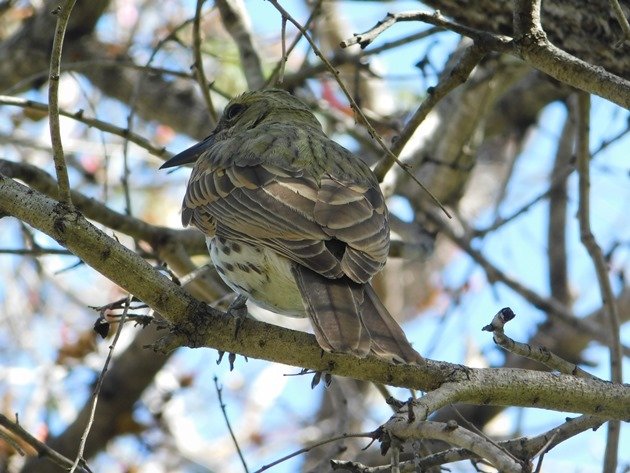
We walk our neighbours’ dogs during the week to our two local parks, which are Brolga Park and Cygnet Park. It gives the dogs a chance to get some exercise and for ourselves to keep track of the different birds that move through the area throughout the year. As the native plants flower different birds arrive and there have also been some surprises over the years. A good example is a Little Curlew in Brolga Park. Cygnet Park is a bigger park and offers such delights as the Tawny Frogmouths. There are also numerous Great Bowerbirds in the area that thieve from the surrounding houses and build a bower to attract females.
This week as we approached Cygnet Park and headed straight for a tree, which is inevitable with a male dog, we heard odd sounds. The first sound was a Whistling Kite, but looking up there was no bird to be seen. Then even more bizarrely was the sound of a Masked Lapwing. Now, either of these bird species could be heard or seen in the park and there are a pair of Masked Lapwings currently residing there, but they never sit in trees!
We soon discovered the source of the sounds and it was neither of the species I just mentioned. Instead there were two Olive-backed Orioles in the Kimberley Bauhinia. One of the Olive-backed Orioles appeared to be a juvenile by the condition of its feathers. I cautiously moved around the tree trunk to get some photos. The header photo and below are the juvenile bird.
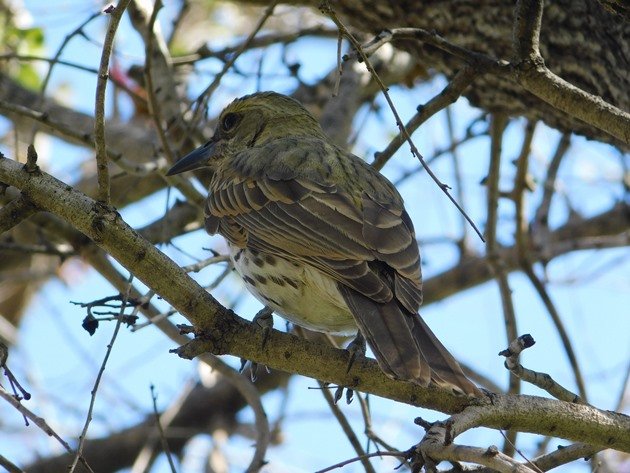
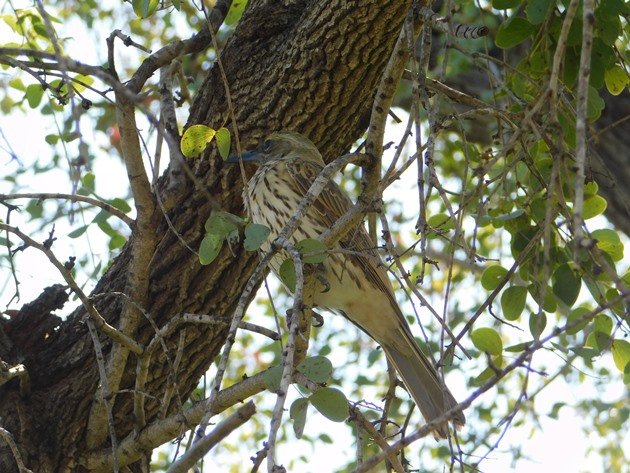
Olive-backed Oriole
We soon realised that the adult Olive-backed Oriole was close by and I moved slowly around to take some photographs. The distinct red eye and beak were clearly visible amongst the foliage. The striped front to the Olive-backed Orioles is not the best camouflage even though their green colouring on their backs is rather good.
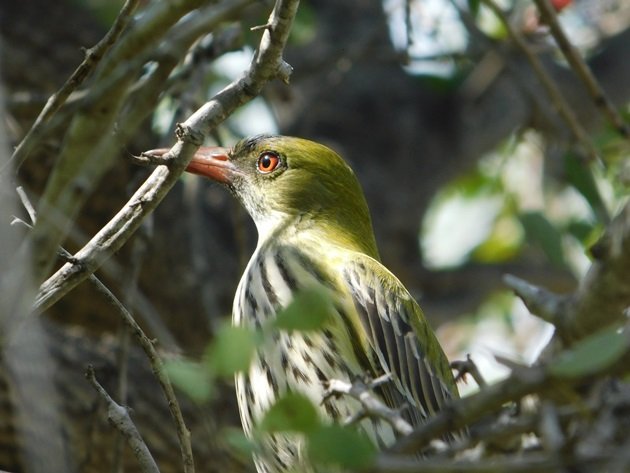
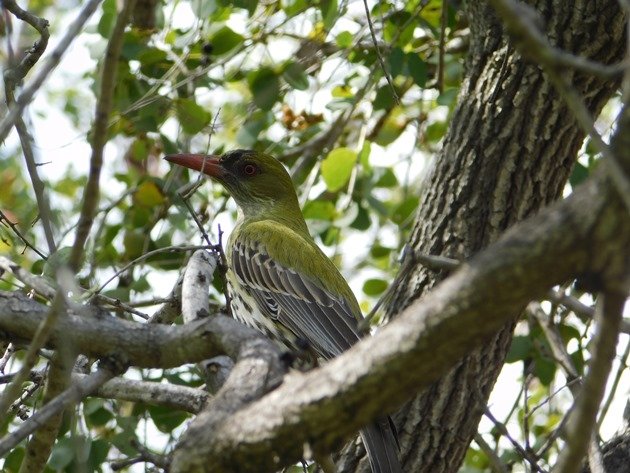
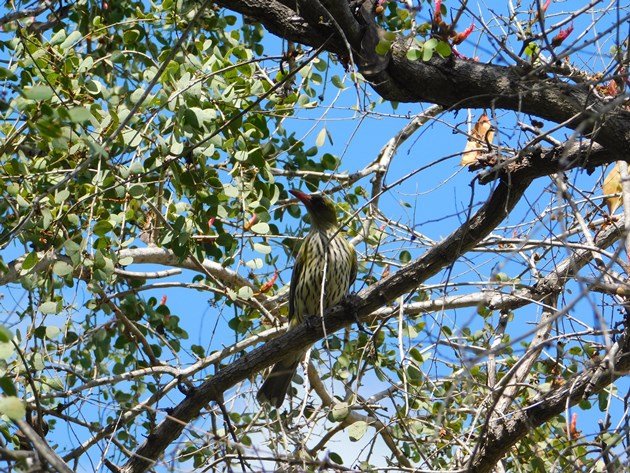
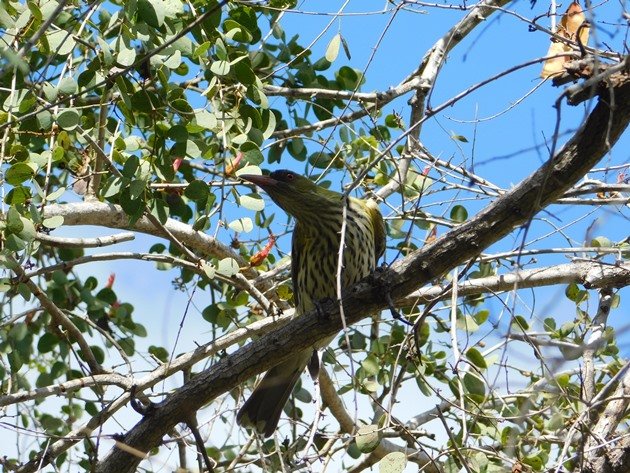
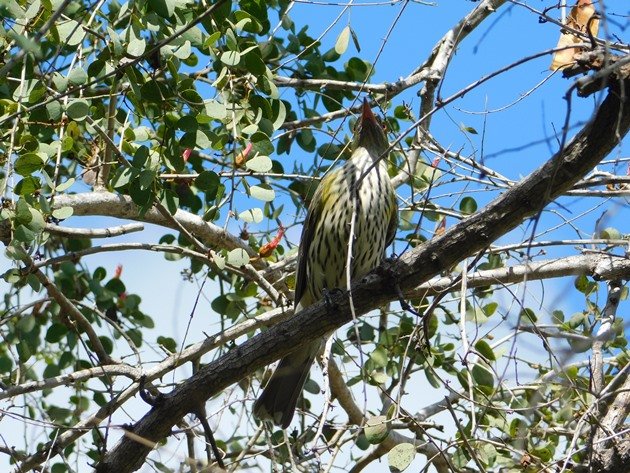
Olive-backed Oriole-adult
The Olive-backed Orioles had ample food to eat in the Kimberley Bauhinia and they dipped their tongues into the flowers.
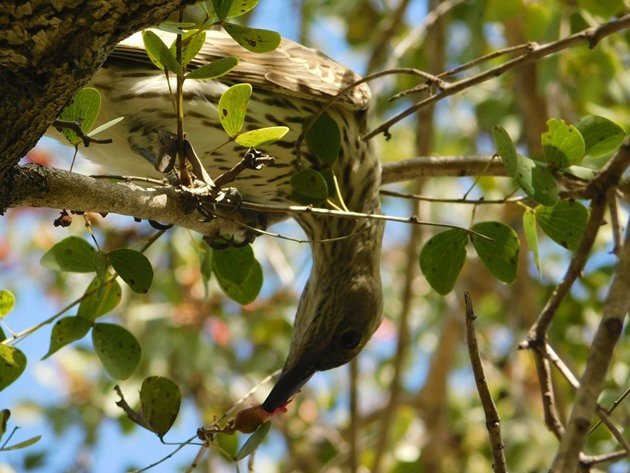
Olive-backed Oriole Feeding in the Kimberley Bauhinia
The flowers on the Kimberley Bauhinia are very pretty and the trees are currently covered in them. They attract a lot of bird species and they make for a rather spectacular tree as well.
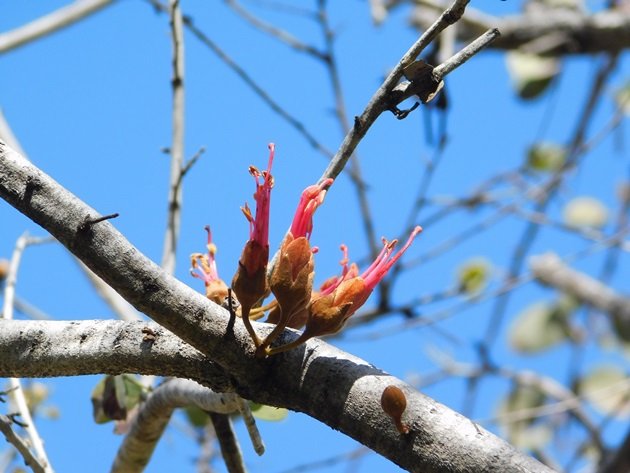
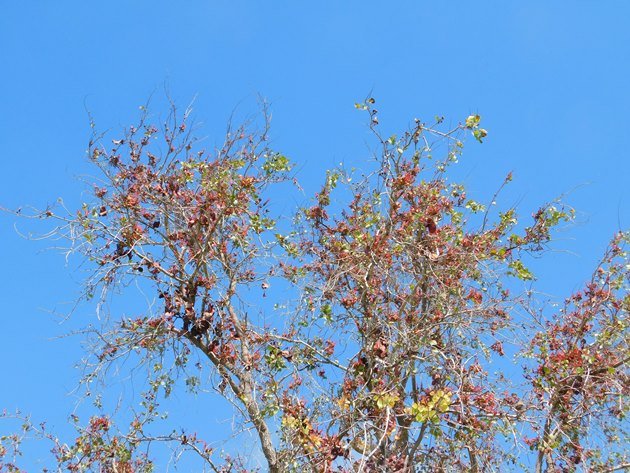
Kimberley Bauhinia flowers and tree
We are very lucky that we have a good variety of native plants both in our own garden and the local parks. Native plants are always the ideal plants to attract native species. Our local government agencies realise that and plant accordingly. We fully appreciate the green space in our town.




 New writers welcome – please contact us for details.
New writers welcome – please contact us for details.

















I just looked Cygnet Park up on Google Maps. You’re right near the Broome Airport, so it will be a simple matter for me to drop in and see the Orioles, Frogmouths, and Bower Birds, right? What a wonderful place!
Hi Donna,
If only! Sadly our state borders and international borders remain closed into the foreseeable future. We have a shortage of vaccines in Australia and those that want a vaccine can’t get it. Half of the population is in lockdown due to outbreaks at the moment. We would love you to drop in when you are able, though and we will happily show you any birds you would like to see!